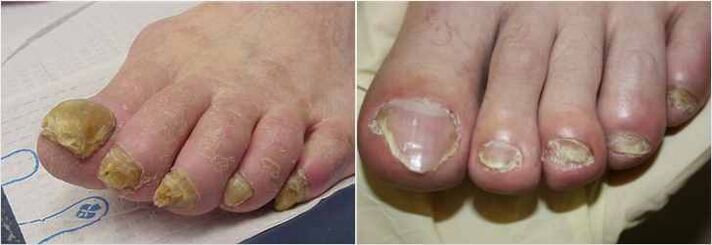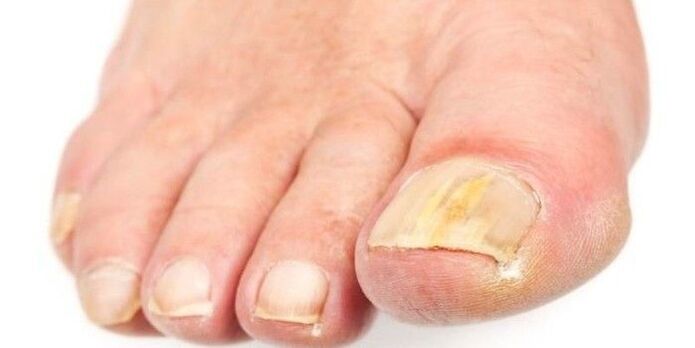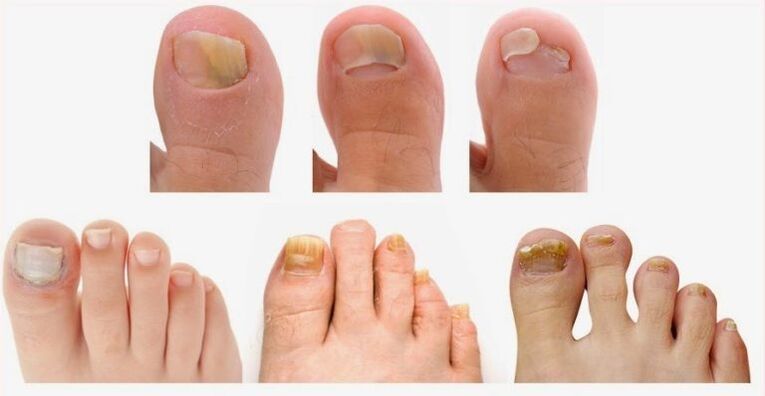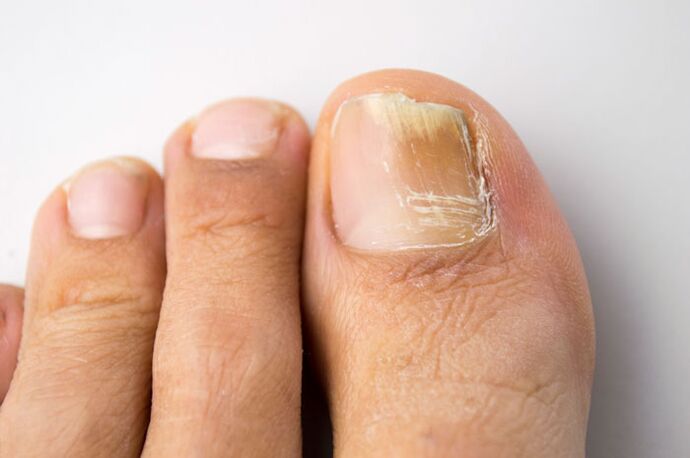Many changes in the legs of the legs can make people a medical nail infection, known as Onychomycosis from a medical point of view. Fungal infection of the nails sometimes makes the condition infectious or is related to poor hygiene. In fact, 10% of all adults have fungal nail infections. This percentage increases to 20% of adults 60 years of age or older. In fact, non -normal nails can be caused by a number of circumstances, including but not limited fungal infection. There are many other reasons why nails can look different.
Treatment of nail fungus
Onychomycosis is a fungal infection known as a special fungus called dermatophyte. As most of these infections are relatively superficial, current procedures seem to have to work well. This is not the case because the nail is relatively impenetrable. Examples of states that often confuse fungal nails, yellow (onycholysis), hematoma, green nails (caused by pseudomonas bacteria), bones (usually associated with psoriasis), nail infection (steamonichia) and late injuries.
What other conditions can be taken for fungal nails?
Here are some other conditions that may be instead of fungal nails:
Lines and ridges: These are common and considered normal. They may get worse during pregnancy. It can be caused by large groove injuries in the middle of the nail. Some people may notice these changes after chemotherapy.
Senile nails: With age, the nails become fragile and develop the spines and the separation of the nails at the end of the nail. Special solutions and baths should be used to avoid this.
White or yellowish nails may occur due to onyolsis. This means separating the disc from the base of the nail. The color that is the shape of the nail air. The treatment consists of a short cut of the plate, not the cleaning and the Polish. If you have to hide the color, you have to wait two to three months. Constant onkelos can be sensitive to fungal infection. The red or black plates due to the hematoma or the blood under the nail are usually due to injury. If you have a black spot under your nails that are not caused by injury, visit a dermatologist or orthopedist to make sure this is not melanoma (type of skin cancer associated with pigmented cells). Simple biopsy can exclude malignancy (cancer).
Green plates can be caused by Pseudomonas bacteria that grow under the nail, which are partially separated from the base of the nail. This infection can cause an unpleasant odor. The treatment consists of cutting the nails every short week, do not clean it, do not polish it if you have to hide the color and wait for two to three months. We also recommend that you avoid soaking the plates in any water (and thoroughly dry the legs after bathing. If the problem has not disappeared, there are medicines prescribed by the doctor. The nails affected by psoriasis may be brown.
The edema and redness of the skin around the nail are called paronychia. This skin infection at the bottom of the nail (cuticle). If the infection is acute (rapid start), it is usually caused by bacteria. You can react to warm baths, but it is better not to see a doctor not alone, but immediately. Chronic paronichia occurs when the cuticle is inflamed or irritated over time. Fungi sometimes use damaged skin and infected. Therapy begins with the skin remaining dry and excreted from the water. If the problem does not disappear, consult a doctor. Antibiotics are not often used, but may be required for severe infection. 
Damage to chronic nails can lead to damage to the nails, which can be very similar to fungal nails. Some injuries can cause constant changes that imitate the appearance of fungal nails. Miconiconidii Trichophyton fungus that live in the soil and can lead to fungal infections of skin, hair or nail.
What causes fungal infections and what risk factors are there?
In normal healthy people, nail fungus infections are most often caused by a fungus that falls into wet areas. Community showers such as the gym or swimming pools, common resources. Risk factors are also a transition to nails, which use the inadequate cleaning of the tools (such as cutter, fillets and foot baths) and family members with fungal diseases. It has been proven that athletes are more prone to the fungus of the nail.
It is assumed that this is due to the fact that dense, sweaty boots are caused by recurrent injuries of the legs. The presence of sports loads makes the fungus more likely to infect the nails of the legs. Repeated injury also weakens the disc, which makes it more prone to fungal infection. This includes everything that worsens the immune system and is prone to fungal infection. These include conditions such as AIDS, diabetes, cancer, psoriasis or immunosuppressants such as steroids.
Fungal nails are infectious?
Although the fungus needs to be acquired somewhere, it is not very infectious. It is so common to find more than one person in a family who is nothing more than a coincidence. The mushroom can be transmitted personally, but only with a constant intimate contact.
What are fungal symptoms and nails signs?
Although fungal nails are usually cosmetic problems, some patients suffer from pain and discomfort. These symptoms can be exacerbated by shoes, activity and inadequate nail cuts. There are many types of mushrooms that can affect the nails. However, the most common is called Trichophyton Rubrum. This type of fungus is prone to infection of the skin (known as dermatophita) and is manifested in the following specific methods. It begins at the end of the nails and lifts the disc: it is called "Distal Onychomycosis". This is the most common type of nail infection (90% of cases).
This is more common in the toes, the thumb is usually the first to affect. Risk factors include old age, swimming, sports load, psoriasis, diabetes, infectious family members or depressed immune system. It usually begins as a colorless area on the corner of the thumb and slowly spreads into the cuticle. It is often accompanied by onyolsis. The most common reason is T.
It starts at the bottom of the nail and lifts its nails, called "proximal tendon onymomycosis". This is the least common type of fungal damage (about 3% of cases). It looks like a distant type, but it starts with a cuticle (base of the nail) and slowly spreads to the tip of the nail. This type is almost always found in people with damaged immune systems. Fragments are rarely possible under the tip of the nail, unlike distal onycommicosis. The most common cause is mold T. rubrum and dermatofit.
Yeast onychomycosis: This type is caused by the yeast called Candida, not the above Trichophyton fungus. This is more common in the nails and is a common cause of fungal nails. Patients can be associated with paronychia (cuticle infection). Candida can cause yellow, brown, white or thickened nails. Some people who have this infection also have fungi in the mouth or in chronic paronichia), which is also infected with pores. White surface onychomycosis: In this condition of the nail, the doctor can often clean the white powder material in the upper part of the nail plate. This condition is the most common in the tropical environment caused by a well -known fungus and trihofitii manager.
What tests do health professionals use to diagnose fungal nails?
It has been shown that only a physical examination is an unreliable method of diagnosing fungal nails. Many circumstances can cause nails to be injured, so even doctors have difficulty. In fact, studies have shown that the abnormal appearance of the nails was only approx. 50% -60% caused by fungus. Therefore, laboratory tests are almost always indicated. Some insurance companies may even apply for a laboratory test to cover the antifungal drug. The pattern base is available either by cutting the nail or drilling a hole. This piece is sent to the laboratory, where they can be painted, cultivated or tested by PCR (to identify the genetic material of organisms) to identify the presence of the fungus.
If the negative result of the biopsy is accompanied by high clinical suspicion, such as ragged, bleached, thickened and loose plates, they require a second test because of the prevalence of misconceptions in these tests. Most drugs used to treat nail fungus have side effects, so you need to know the contraindications. 
What professionals treat nail fungus?
Many doctors can treat nail fungus treatment. A doctor, dermatologist or orthopedic can treat nail fungus. Any of these doctors can provide a proper diagnosis and prescribe fungal infection. The orthopedic or dermatologist may shake the upper layer of the nail or even remove some of the nails.
What mushroom nails do you need to treat?
Creams and other relevant drugs are traditionally less effective against nail fungus than oral drugs. The reason for this is that the nails are too complicated to penetrate external applications. It is also difficult to adhere to local treatment systems. These drugs often require daily requests during a period of one year to view the results. One of the main benefits of local treatment is the minimal risk of severe side effects and the interaction with drugs compared to oral therapy.
Coral antifungal therapy is approx. It works for 50-75%, depending on the medicine. This may take nine to twelve months to make sure it worked or not, because it takes so much time to build the nail. Even if the therapy works, the fungus is approx. You can return to 20-50%. Currently, oral antifungal therapy is considered the best tool for treating fungi on the feet due to higher healing speed and shorter duration of treatment compared to local therapy.
Many innovative treatment methods are still being checked:
- Laser therapy or photodynamic therapy use the use of light -active agents on the plate and follows the bright light of the appropriate wavelength at the angle.
- The use of electricity to promote the absorption of relevant antifungal drugs into the nail is also called iontophors.
- The use of a special nail polish that changes the nail mixture to make it inevitable for fungal growth: if it works, this can be a cheap method of dealing with the problem in the future.
One way to finally get rid of the nail fungus is the operation. The surgical treatment of Áhomycosis involves the removal of the nail. However, this often only provides temporary relief, and the relapse is common when additional antifungal drugs (oral or local) are not used at the same time. However, surgical removal can be justified if the touched nail is associated with other factors such as injury or infection.
Is it possible to prevent the appearance of nail fungus on the legs?

Since the fungus really blooms in warm wet areas (such as sweaty legs), there are certain areas that need to be avoided or used carefully. It is assumed that showers, dressing rooms and pools are mushroom sources, although there are no studies confirming this fact.
The nail polish and acrylic nails are also less breathing and makes it more prone to fungal infection. Fungi can be found everywhere - in the air, dust and soil. Hygiene measures, such as socks and shoes spraying and reasonable, and these measures may even help a little. Nevertheless, avoiding dense, non -breathable boots or gender for sports facilities, this is probably the best prevention. Daily washing the legs and drying between the fingers can help prevent nail fungus. Fungi are moved to pets such as cats and dogs. However, they do not often cause disease.
How to determine nail fungus?
Treatment of fungal nails can be difficult and take up to 18 months. Re -infection and re -infection are common (the frequency of infection is 40% -70%). An attempt to remove or change risk factors, if possible, is important to prevent re infection. People who have medical illnesses who are prone to fungal lesions can be cured for even longer.
Tips to prevent treatment of nail fungus
The fungus causes only 50-60% of non -normally inflatable nails. It is difficult to immediately note the difference between the various causes of bleaching nails (even for doctors). Onychomycosis is often not treated. The reasons for which medical treatment is primarily required with injuries to the legs or nails.























